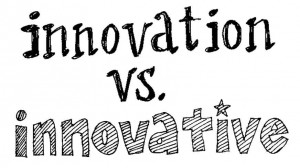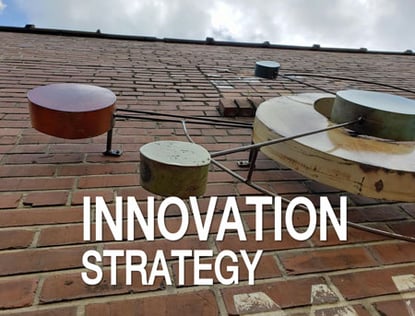I love questions to help you both expand innovative possibilities and prioritize ideas, and today's Blogapalooza offers five questions fitting that description. This is second Blogapalooza post from Chris Gregory, vice president of marketing for a high-growth transportation engineering products company here in Kansas City. Chris is sharing the five questions he uses to gauge whether an innovative idea is really what it purports to be:
Is Everything Really Innovative these Days?
Every couple of years a new catch phrase rises to prominence in the management lexicon. Today the word is “innovation.” As touted as innovation is as an asset, it introduces a challenge: how do you know it when you see it?
Because innovation is the buzzword, it permeates management’s direction to its teams and companies. “Be innovative!” New product launches now require a press release with the word “innovative” in the headline.
- What are customers looking for? Innovative products.
- How will we sell more? Innovative products and innovative marketing.
- How will we solve internal challenges? Innovative processes and culture.
- How will we build our brand? Innovative communications and service.
- How will we staff our teams? Innovative recruiting and structures.
- How will we beat the competition? Be more innovative.
- How will we attract outside investment? Be known for innovation.
So if innovation is so critical to…everything…then how does one know when an idea is a valuable innovation? An idea labeled new, creative, progressive, insightful, clever, or even inventive may not be innovative. To reach that distinction, an idea is all those things and more.
5 Questions to Test for Innovation Potential
I scrutinize ideas using these five questions to determine their degree of valuable innovation:
 1. Is it viable?
1. Is it viable?
Sounds like a simple question. Unfortunately, most would-be innovators fail to analyze all the angles of their new idea. Focusing on the positives of an idea often overshadows the inherent challenges. For an idea to reach reality, it must have powerful benefits and nearly no downside. A new process that will quadruple productivity at only twice the cost has little chance of adoption. If you can double productivity at the same cost, then you really have something.
2. Does it meet a market’s need or want to an extent they never dreamed possible?
Good products can meet market needs. However, innovative products do it in such a way or to such an extent no one thought was possible. Because it took so long to get a message from one US coast to the other, the Pony Express was established. It was a faster version of the existing method for delivering mail. However, the telegraph solved the same problem in both a profoundly new way and to a far greater extent.
3. Is there a definable group that needs your innovation?
A better mousetrap is only useful to people who have rodent problems, can afford to solve them and are dissatisfied (whether they know it or not) with their current extermination method. Ask yourself if there are people who will jump at your new idea as soon they know it exists. Can you identify and find them? How will they become aware of your innovation?
4. If your innovation is a product, are your marketing and sales people excited about it?
An innovative product is so clearly valuable that your go-to-market teams cannot wait to get their hands on it. They see the opportunity to sell more and help their customers.
5. Are you changing the game?
Such a cliché, but a useful question. Does your innovation so fundamentally and obviously improve on or replace the previously available alternative that in a short amount of time no one will want the alternative?
How innovative is your idea?
If you answered yes to each of these questions, be assured your idea is innovative. If you answered yes to more than half, you have something valuable. If you said yes to three or fewer, your idea needs some work before deeming it to be an innovation. It may be a great idea, just not yet innovative. – Chris Gregory



